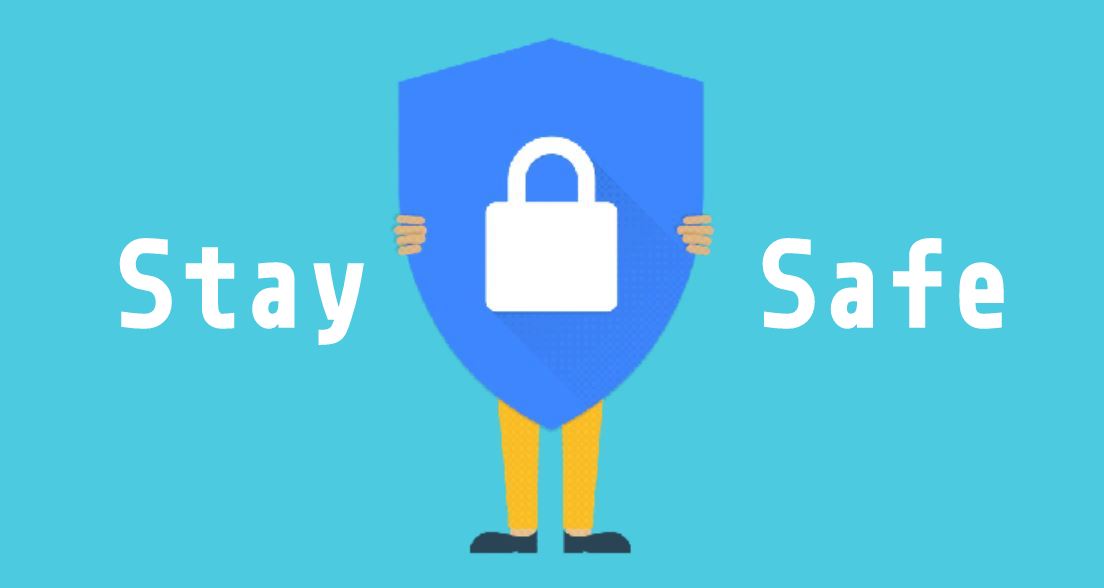In an increasingly interconnected world, the digital realm has become an extension of young people’s lives. From education and social connection to entertainment and personal development, online platforms offer unparalleled opportunities. However, this omnipresence also brings significant risks, making online safety an urgent and paramount youth priority. Safeguarding children and adolescents in the digital space requires a multi-faceted approach, addressing threats ranging from cyberbullying and inappropriate content to privacy breaches and online predators. Understanding these dangers and implementing effective protective measures is crucial for parents, educators, policymakers, and the tech industry to ensure a secure and empowering online experience for the next generation.
The Digital Landscape

Today’s youth are digital natives, born into a world where the internet is as fundamental as electricity. They navigate online spaces with an intuitive ease, often without fully grasping the inherent risks lurking beneath the surface. This generation’s deep immersion necessitates a proactive and comprehensive understanding of online safety.
A. The Evolution of Online Interaction for Youth
The ways young people engage online have dramatically evolved, introducing new complexities to safety.
- From Static Websites to Dynamic Platforms: Early internet use for youth often involved static websites for information. Today, interaction happens on highly dynamic, user-generated content platforms.
- Social Media’s Rise: Platforms like TikTok, Instagram, YouTube, and Snapchat are central to youth social lives, allowing for constant connection, self-expression, and community building, but also exposing them to social pressures and potential harassment.
- Gaming’s Social Dimension: Online multiplayer games and virtual worlds (like Roblox and Fortnite) have become primary social hubs where children interact with friends and strangers, often through voice chat and in-game messaging.
- Ubiquitous Mobile Access: Smartphones ensure constant connectivity, meaning online interactions are no longer confined to specific times or places, blurring the lines between online and offline risks.
- Emerging Technologies: The rise of the metaverse, Artificial Intelligence (AI) chatbots, and Virtual Reality (VR) introduces new layers of complexity, from immersive environments that can feel hyper-real to AI-generated content that blurs lines of authenticity.
B. Why Online Safety is Critically Important
The distinct developmental stage of youth makes them particularly vulnerable to online risks, underscoring the urgency of online safety.
- Developing Brains: Adolescents’ brains are still maturing, particularly areas related to impulse control, risk assessment, and long-term consequences. This can make them more susceptible to online temptations, peer pressure, and less able to foresee the repercussions of their digital actions.
- Identity Formation: Youth use online spaces to explore identity, which can lead to sharing too much personal information or engaging in risky behaviors to gain validation.
- Trust and Naivete: Children and younger teens may be more trusting of online strangers or deceptive content, making them easier targets for manipulation or exploitation.
- Emotional Vulnerability: The online world can amplify existing emotional vulnerabilities. Cyberbullying, for instance, can be relentless and inescapable, having profound impacts on mental health.
- Digital Permanence: What goes online often stays online. A momentary lapse in judgment can have long-lasting consequences for a young person’s reputation, future opportunities, and mental well-being.
The Spectrum of Online Risks for Youth
The threats facing young people online are diverse and constantly evolving, requiring a nuanced understanding to effectively mitigate them.
A. Direct Harm and Exploitation
These risks involve direct malicious intent and can have severe real-world consequences.
- Online Grooming and Sexual Exploitation: Predators use online platforms to build relationships with children, gain their trust, and eventually manipulate or coerce them into meeting offline or engaging in sexually explicit activities. This is one of the gravest online threats.
- Cyberbullying and Harassment: This involves the use of digital technologies to repeatedly harass, intimidate, or threaten someone. It can take many forms:A. Spreading Rumors: Posting or sharing hurtful gossip.B. Sharing Private Information: Doxxing, or sharing embarrassing photos/videos.C. Impersonation: Creating fake profiles to harass others.
D. Exclusion: Deliberately excluding someone from online groups or games.
E. Threats and Intimidation: Direct messages containing threats of harm.
- Online Financial Scams: Children and teens can be targeted by scams ranging from fake giveaways and “free Robux/V-Bucks” offers to more sophisticated phishing schemes designed to steal personal information or payment details.
- Human Trafficking: In extreme cases, online grooming can escalate to human trafficking, where individuals are lured into exploitative situations.
B. Content-Related Risks
Exposure to inappropriate or harmful content can be detrimental to young minds.
- Exposure to Inappropriate or Explicit Content: This includes accidental or intentional exposure to pornography, violent content (e.g., gore, real-world violence), hate speech, or content promoting self-harm, eating disorders, or extreme ideologies. Filters are not always foolproof.
- Misinformation and Disinformation: The spread of false or misleading information online can influence young people’s understanding of the world, promote unhealthy behaviors, or even radicalize them.
- Pro-Eating Disorder/Self-Harm Content: Certain online communities or content creators may inadvertently or explicitly promote unhealthy behaviors related to body image, disordered eating, or self-harm, providing dangerous validation.
- Gambling and “Loot Box” Risks: Many games feature monetization mechanics like loot boxes or in-game currency that can mimic gambling, potentially exposing youth to addictive behaviors and financial risks.
C. Privacy and Data Security Risks
Young people often lack a full understanding of their digital footprint and data privacy, leaving them vulnerable.
- Over-sharing Personal Information: Teens may inadvertently share too much personal identifiable information (PII) like their full name, address, school, or phone number, making them vulnerable to stalking, harassment, or identity theft.
- Privacy Settings Neglect: Many social media platforms have complex privacy settings that youth may not understand or utilize effectively, leaving their profiles and content more public than intended.
- Data Collection by Apps and Services: Many popular apps and online services collect vast amounts of data on users, including minors. Without proper understanding, youth are often unaware of how their data is being used for advertising or other purposes.
- Phishing and Malware: Young people can fall victim to phishing scams (fake emails/messages designed to steal login credentials) or accidentally download malware through deceptive links or pirated content.
- Identity Theft: Stolen personal information can be used for identity theft, impacting a young person’s credit score or financial future before they even fully understand it.
D. Psychological and Emotional Impacts
The constant pressure and curated realities of online life can significantly affect mental well-being.
- Anxiety, Depression, and Loneliness: Research indicates a correlation between excessive social media use (particularly passive consumption and social comparison) and increased rates of anxiety, depression, and feelings of loneliness among youth.
- Fear of Missing Out (FOMO): Constant exposure to the seemingly perfect lives of others online can trigger FOMO, leading to feelings of inadequacy, envy, and a compulsive need to stay constantly connected.
- Body Image Issues and Dysmorphia: The emphasis on curated appearances and filtered images on social media can contribute to negative body image, body dysmorphia, and unhealthy comparison.
- Sleep Disruption: Late-night screen use, especially with blue light, significantly interferes with natural sleep cycles, leading to fatigue, irritability, and diminished academic performance.
- Attention and Concentration Issues: The fast-paced, constantly stimulating nature of online content may contribute to reduced attention spans and difficulty with sustained focus on complex tasks.
A Multi-Layered Approach to Ensuring Online Safety

Addressing the diverse and evolving threats to youth online requires a collaborative effort involving parents, educators, the tech industry, and policymakers, alongside empowering youth themselves.
A. Empowering Parents and Guardians
Parents are the primary guardians of their children’s online safety and play the most critical role in fostering healthy digital habits.
- Open Communication and Trust:A. Regular Conversations: Establish an environment of open, ongoing dialogue about online experiences, challenges, and concerns. Encourage children to come to them with any worries without fear of punishment.B. Active Listening: Listen without judgment and validate their feelings, even if the situation seems minor to an adult.C. Empathy: Acknowledge that the digital world is a significant part of their social reality.
- Digital Literacy for Parents: Parents must educate themselves about the platforms their children use, understand common online risks, and stay updated on emerging technologies.
- Set Clear and Consistent Boundaries:A. Age-Appropriate Access: Adhere to age ratings for games and social media platforms.B. Screen Time Limits: Establish reasonable daily screen time limits that ensure balance with sleep, physical activity, homework, and family time.C. Device-Free Zones/Times: Implement rules like “no phones at the dinner table” or “no devices in bedrooms after a certain time” to promote offline interaction and better sleep.
- Utilize Safety Tools: Leverage parental control features on devices, browsers, and platforms. Teach children how to use privacy settings, block users, and report inappropriate content.
- Model Responsible Behavior: Children learn by example. Parents should demonstrate balanced screen use, respect digital privacy, and engage in diverse offline activities.
- Be Aware of Warning Signs: Look for behavioral changes (e.g., withdrawal, secrecy, anxiety, changes in sleep or eating habits) that might indicate an online problem.
B. The Indispensable Role of Education
Schools and educators are vital in equipping youth with the knowledge and skills to navigate the digital world safely and responsibly.
- Comprehensive Digital Citizenship Curriculum: Integrate robust programs from primary school through high school that teach:A. Online Safety Basics: Password security, phishing awareness, identifying scams.B. Media Literacy: Critical thinking about online content, discerning misinformation, understanding algorithmic bias.C. Digital Footprint: Awareness of data permanence and responsible online identity management.
D. Cyberbullying Prevention: Strategies for reporting, intervening, and supporting victims.
E. Privacy Education: Understanding data collection, privacy settings, and personal information sharing.
- Promoting Empathy and Respect Online: Foster a school culture that extends respect and empathy to online interactions, emphasizing the real-world impact of digital behavior.
- Support for Victims: Establish clear protocols for reporting cyberbullying and other online harms, ensuring victims receive immediate support and resources.
- Teacher Training: Provide ongoing professional development for educators to keep them updated on online safety best practices and effective ways to teach digital literacy.
C. Industry Accountability and Ethical Design
Technology companies have a significant ethical and societal responsibility to design and manage platforms that prioritize the safety and well-being of young users.
- “Safety by Design” Principles: Build safety, privacy, and well-being features into platforms from the ground up, rather than as afterthoughts. This includes default privacy settings for minors and intuitive parental controls.
- Robust Content Moderation: Invest heavily in effective content moderation systems (both AI and human) to quickly identify and remove harmful, illegal, or inappropriate content, including child sexual abuse material (CSAM), hate speech, and self-harm promotion.
- Age Verification: Implement more effective age verification mechanisms to prevent underage users from accessing age-restricted platforms.
- Transparency and User Control: Be transparent about data collection practices and give users (and their parents) greater control over their data and privacy settings.
- Bias Mitigation: Work to identify and reduce algorithmic biases that could promote harmful content or perpetuate stereotypes.
- Collaboration with Law Enforcement and NGOs: Actively collaborate with law enforcement agencies and child protection organizations to report and combat online child exploitation.
- “Take a Break” Features: Design features that encourage healthy usage habits, such as time limits, reminders to disengage, or options for digital detox.
D. Policy and Regulatory Frameworks
Governments and international bodies have a crucial role in establishing clear, enforceable laws and regulations to protect youth online.
- Child Protection Laws: Enact and enforce strong laws against online child sexual exploitation, grooming, and trafficking.
- Data Privacy for Minors: Implement robust data privacy regulations (e.g., GDPR-K, COPPA) specifically tailored to protect children’s data and limit targeted advertising to minors.
- Platform Accountability: Hold tech companies accountable for ensuring safety on their platforms, potentially through fines or other penalties for failure to adequately protect minors.
- Digital Literacy Initiatives: Fund and support national digital literacy programs and campaigns.
- International Cooperation: Foster international collaboration to combat cross-border online crimes against children.
- Research and Data: Invest in ongoing research to understand the evolving landscape of online risks and their impacts on youth.
Conclusion
The digital world offers unparalleled opportunities for youth, but its inherent risks demand that online safety remain an absolute priority. It’s not a singular issue but a complex web of interconnected challenges requiring a comprehensive, multi-stakeholder approach. Merely blocking access is no longer a viable solution; instead, the focus must be on empowering young people with the skills, resilience, and support systems necessary to navigate the digital realm securely and confidently.
By fostering open dialogue within families, embedding robust digital literacy into education, holding tech companies accountable for ethical design, and establishing clear regulatory frameworks, we can collectively build a safer, more enriching online environment. The future belongs to these digital natives, and ensuring their well-being in the online world is not just a moral imperative, but a fundamental investment in the health and potential of generations to come. The journey toward a truly safe digital future is ongoing, and it requires vigilance, adaptation, and a shared commitment from us all.









Discussion about this post